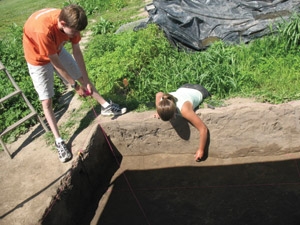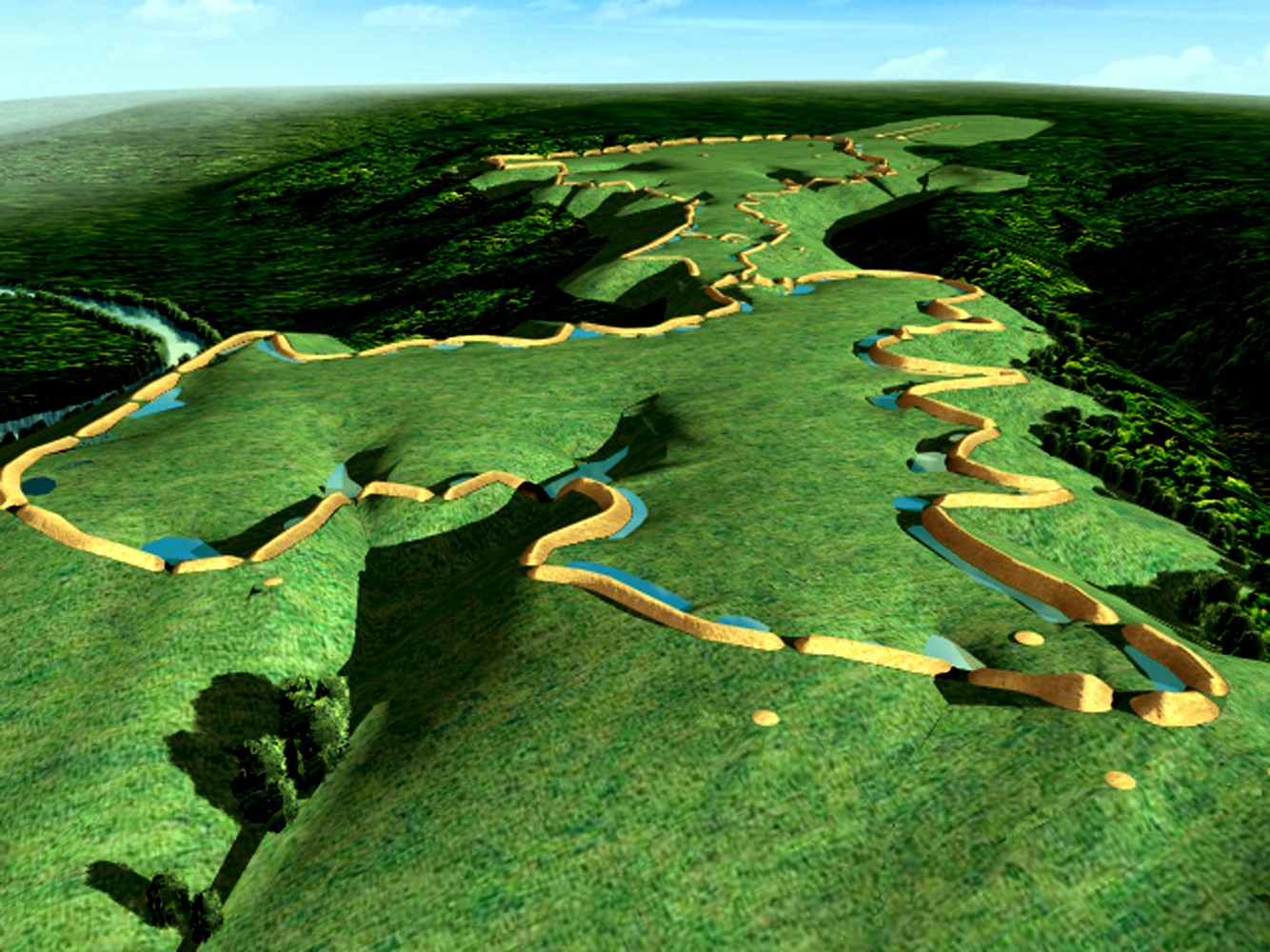Local dig produces the ‘Holy Grail’ of archaeology
By DEBBY HEISHMAN
Staff writer
One little arrowhead has caused quite a stir among local amateur
archaeologists. But one arrowhead is all it took to turn Ebberts Spring Site 36FR367,
two miles south of Greencastle, from a typical archaeological dig into a
super site.
The artifact, which can be hidden in the palm of your hand, is a paleo
point ˜ a stone point from a spear used during the Paleo-Indianperiod
from 10,000 to 8000 B.C., just after the last ice age. It’s identifiable
from later styles of points by the groove chipped into each side. These
grooves helped in slipping the stone into a split wood shaft.
It’s a rare find, said Doug Stine, president of Cumberland Valley
Chapter 27 Society for Pennsylvania Archaeology Inc.
“A paleo point is the Holy Grail of archaeology,” he said.
The point was found last fall while the chapter’s members, all but one
of them avocational archaeologists, were excavating nine inches deep in
the lawn of the Colonial era home at Ebberts Spring. At this layer, they
were finding artifacts from 1000 B.C. and earlier.
Stine had just unearthed an exceptional artifact and wandered over to
where Melissa Spatz, a Gettysburg teacher, was looking intently at the
ground. The two had a friendly competition going and Stine wanted to
brag.
“Are you OK?” he asked as she sat there, staring at her work site. There
lay the paleo point.
“In one instant,” he said, “we went from a 9,000-year-old archeological
dig to an 11,000-year-old super site.”
The Pennsylvania Historical and Museum Commission reports that this type
of point is an uncommon find, due to a low population density during the
relatively short Paleo-Indian period. All it takes for a site to be
listed as a paleo dig is one artifact from the Paleo period. The site is
named a super site when it includes artifacts from all four levels of
past civilization (see chart).
Other items found at Ebberts Spring, besides masses of points from the
Archaic and Woodland periods, are clay pipes, stone tools and pottery,
including a nearly complete bowl that’s associated with burials in the
mid-Woodland period. More recent artifacts such as buttons, jars and old
coins were found in the top layers of dirt.
While some excavation at the site had been ongoing for years, the dig
started in earnest in 2003 after the property owner, also a chapter
member, mentioned how many arrowheads he’d find each year while digging
his gardens. Workers dug near the spring and were overwhelmed by the
sheer number and variety of items uncovered.
Stine charted a grid of 5-foot-by-5-foot squares and numbered each one.
Digging only 3 inches deep at a time, teams of workers dug and recorded
their finds by section. Layer by layer, items were carefully collected
and stored. In winter, they clean, sort and catalog all their finds,
using the old two-story springhouse as a makeshift office.
Ron Powell, the site supervisor and a retired engineer, is convinced
this was a permanent community for many ages of civilization.
“The spring produces 650 gallons of water a minute,” he explained. “This
is what drew people here for 11,000 years.”
More recently, he said, this area was the crossroads of two great Indian
trails, the Virginia Trail and the Georgetown Road.
“At least a remnant of people from different groups stayed here all
year,” he said. “It would have been occupied through fall and winter,
until they moved down to the Potomac each spring to fish.”
Powell also found post hole patterns that match the size and shape of a
sweat lodge, a building where young men would go for ritual cleansing
and healing.
“We found a hearth with pottery the right size and shape,” he said.
Stine said the site itself is a unique dig. Doug McClearen, a chief
officer with the state’s Bureau of Historic Preservation, told Stine
that Ebberts Spring is the only Pennsylvania site in the Great Valley
region that’s been dug near a spring. The Great Valley, of which
Cumberland Valley is a portion, runs from New York to the Tennessee
River valleys.
The rare find at Ebberts Spring is still not widely known. This spring,
Stine plans to publicize it in the society’s magazine, Pennsylvania
Archaeologist.
Copyright ©2006 Public Opinion.
Mike Ruggeri’s Ancient America and Mesoamerica News and Links
http://community-2.webtv.net/Topiltzin-2091/MIKERUGGERISANCIENT
Mike Ruggeri’s Maya Archaeology News and Links
http://community-2.webtv.net/Topiltzin-2091/MIkeRuggerisMaya
MIKE RUGGERI’S MOUND BUILDERS/ ANCIENT SOUTHWEST NEWS AND LINKS
http://community-2.webtv.net/Topiltzin-2091/MIKERUGGERISMOUND
Ancient America, Mesoamerica and Andean Museum Exhibitions, Lectures and
Conferences
http://community-2.webtv.net/Topiltzin-2091/AncientAmerica
Mike Ruggeri’s Andean Archaeology News and Links
http://community.webtv.net/Topiltzin-2091/MikeRuggerisAndean



